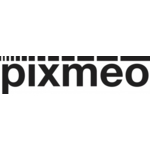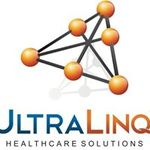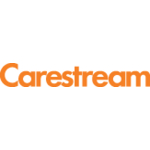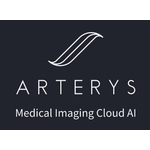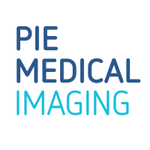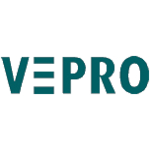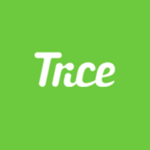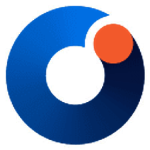List of Best Medical Imaging Software
Showing 10 of 25 productsOsirix is a medical imaging software designed to transform the way healthcare professionals view and analyze diagnostic images. With its user-friendly interface features, Osirix is paving the way for more efficient and accurate diagnoses, making it a...Read Osirix Reviews
UltraLinq is a software designed to streamline medical imaging and enhance healthcare delivery. With its advanced features interface, UltraLinq is revolutionizing how medical professionals manage, analyze, and share diagnostic images securely, effect...Read UltraLinq Reviews
CARESTREAM RIS is a highly advanced radiology information system designed to improve efficiency and streamline workflow for healthcare providers. With its user-friendly interface features, CARESTREAM RIS is revolutionizing the world of medical imagin...Read CARESTREAM RIS Reviews
Arterys is a medical technology company that is transforming the landscape of healthcare. Our software provides physicians with advanced imaging and analysis tools to revolutionize the way they diagnose and treat patients. With a focus on precision a...Read Arterys Reviews
eRAD PACS Evolution is a revolution in medical imaging technology. This innovative software streamlines image management, simplifies workflow, and enhances collaboration between healthcare providers. Say goodbye to outdated systems and hello to a new...Read eRAD PACS Evolution Reviews
3mensio is a software that revolutionizes medical imaging technology. Designed to enhance visualization and aid in accurate diagnoses, this innovative software provides advanced tools for doctors and medical professionals. With its user-friendly inte...Read 3mensio Reviews
Ambra Health is a and innovative healthcare technology company that is transforming how medical imaging is managed and shared. With a user-friendly platform solutions, Ambra Health aims to streamline workflows, improve productivity, and enhance patie...Read Ambra Health Reviews
VEPRO PACS is a state-of-the-art medical imaging solution that revolutionizes the way healthcare facilities manage and share patient images. With intuitive features security measures, VEPRO PACS streamlines the image storage and retrieval process, im...Read VEPRO PACS Reviews
Tricefy is the innovative and game-changing software that is revolutionizing the way medical images are shared and communicated. With its user-friendly platform technology, Tricefy allows healthcare professionals to easily and securely share medical...Read Tricefy Reviews
Aidoc is a powerful, innovative software that revolutionizes the way medical imaging is analyzed and diagnosed. Leveraging advanced technology and algorithms, Aidoc helps radiologists and physicians detect and prioritize critical cases, saving valuab...Read Aidoc Reviews
- What Is Medical Imaging Software?
- Top Reasons Why Businesses Need Medical Imaging Software?
- What Are the Top Key Features of Medical Imaging Software?
- What Are the Top Benefits of Medical Imaging Software?
- What Are the Steps to Choose the Right Medical Imaging Software?
- What Are the Types of Medical Imaging Software for Different Industries?
- What Are the Technology Trends for Best Medical Imaging Software?
- What Are the Deployment Options for Medical Imaging Software?
What Is Medical Imaging Software?
Medical imaging software refers to software specifically developed to assist healthcare professionals in the examination, manipulation, and presentation of medical images. Various imaging modalities such as x-rays, computed tomography (CT) scans, magnetic resonance imaging (MRI), ultrasound images, and other types of scans are encompassed within this category.
Medical image management software enables healthcare practitioners to enhance their ability to assess a patient's medical state, accurately identify various illnesses, and formulate comprehensive treatment strategies. Medical image processing software commonly incorporates a range of functionalities aimed at the identification, diagnosis, and quantification of medical pictures.
These instruments has the capability to identify tumors, quantify the dimensions of organs, conduct blood flow assessments, and distinguish between healthy and pathological tissue.
The program can also be utilized for the purpose of comparing photographs obtained from multiple patients, including those diagnosed with cancer, in order to assist medical practitioners in documenting the evolution of the disease inside an individual patient.
The best medical imaging software can also be utilized to facilitate the identification of areas for development among medical practitioners.
For instance, in the context of daily scanning of patient photographs to assess alterations in tissue dimensions or modifications in treatment plans, the software has the capability to quantify advancements or variations observed over a period of time.
Medical imaging software facilitates seamless data sharing among healthcare experts in various geographical areas, hence enhancing the accuracy of diagnoses and enabling the development of more efficacious treatment strategies.
Top Reasons Why Businesses Need Medical Imaging Software?
1. One recommended approach is to consolidate patient records and photos from various visits into a centralized location to facilitate convenient retrieval.
2. One potential strategy to enhance patient turnaround time is centralizing all medical imaging data into a single accessible repository, enabling efficient retrieval by diverse healthcare practitioners.
3. Medical image processing software aims to offer a conducive setting for remote communication and collaboration among radiologists, cardiologists, and other clinical imaging specialists.
4. The objective is to implement an automated system for managing the workflow of medical imaging operation requests and outcomes.
5. One potential strategy for improving clinical results and enhancing the patient experience is to provide convenient access to imaging information, eliminating the need for patients to wait for scheduled sessions.
6. Advocate for the utilization of a diverse range of imaging modalities, including magnetic resonance imaging (MRI), computed tomography (CT) scans, X-rays, ultrasounds, and various digital medical imaging technologies.
7. The objective of the best medical imaging software is to conduct an analysis and integration of data derived from various medical imaging systems in order to enhance the visualization of data and get valuable clinical insights.
8. The implementation of this technology empowers healthcare professionals to make informed decisions regarding the most suitable imaging modalities for individual patients, hence enhancing the quality of follow-up evaluations.
9. The utilization of advanced algorithmic support enables the provision of precise diagnosis and treatment decisions.
10. One potential strategy for enhancing the efficiency of health information technology (IT) resources involves the provision of a platform that facilitates the integration of various medical imaging systems.
11. Enable healthcare providers to perform a comparative analysis of various imaging results in order to optimize patient outcomes.
12. One potential avenue for enhancing patient safety involves mitigating the likelihood of medical errors and addressing the difficulties that arise from the physical manipulation of medical images.
13. Enhance the efficiency of the consulting process by consolidating internal and external imaging investments into a unified platform.
14. One potential approach to mitigating the financial burden associated with medical imaging is to implement strategies aimed at reducing the necessity for supplementary resources.
15. One potential strategy to enhance the overall efficiency of medical imaging activities is through the implementation of automated features.
What Are the Top Key Features of Medical Imaging Software?
Top Key Features of Medical Imaging Software:
1. Image Viewers: The medical image management software enables users to engage in the assessment, examination, and manipulation of medical imagery encompassing x-ray images, ultrasound scans, MRI scans, and CT scans.
2. Digital Image Transferability: Facilitating seamless and safe transmission of photos and data between diverse healthcare facilities for users.
3. Image Compression: The process involves compressing huge data files to reduce their size, facilitating faster access and more efficient storage.
4. Advanced Modalities: The best medical imaging software enabling users to utilize diverse modalities for the purpose of examining and investigating medical imaging data.
5. Multi-user Access: Enabling concurrent access to medical imaging data by numerous healthcare personnel.
6. Patient Anonymity: The paramount objective is to guarantee the non-disclosure of confidential patient information.
7. Documentation Management: Enabling the provision of secure storage and facilitating convenient retrieval of medical documents.
8. Quality Assurance: The provision of quality assurance tools aimed at assisting healthcare providers in the analysis and validation of pictures for the purpose of ensuring accuracy.
9. Automation: The provision of automated workflow and analytic tools is aimed at mitigating human error and expediting the medical imaging process.
10. Regulatory Compliance: Meeting third-party regulatory standards, such as the Health Insurance Portability and Accountability Act (HIPAA) and the Digital Imaging and Communications in Medicine (DICOM), is essential for ensuring compliance in the healthcare industry.
What Are the Top Benefits of Medical Imaging Software?
1. Increased Efficiency of Care: Medical Imaging Software facilitates the expeditious acquisition, storage, and retrieval of high-resolution medical images, hence expediting the process of diagnosing medical conditions.
2. Improved Accuracy: Medical image processing software plays a crucial role in mitigating errors by offering enhanced and uniform medical pictures that facilitate accurate interpretation.
3. Enhanced Patient Care: A medical image management system has the potential to enhance patient care by offering a comprehensive and precise depiction of a patient's medical status.
4. Cost Savings: The best medical imaging software enables the reduction of labor expenses, data storage costs, and administrative expenditures, while also enhancing patient happiness.
5. Data Management Accessibility: Medical imaging software facilitates convenient access to shared medical image data, hence fostering enhanced collaboration across healthcare professionals and institutions.
6. Time Savings: By streamlining the process of capturing and disseminating medical images, healthcare providers can efficiently get diagnostic information from any location.
7. Remote Access: Medical image management software enables healthcare practitioners to remotely access and engage in collaborative analysis of medical pictures, eliminating the need for physical proximity.
8. Increased Mobility: The utilization of mobile medical image management system enables healthcare practitioners to conveniently retrieve medical pictures on portable devices.
9. Improved Reporting: The utilization of cloud-based medical imaging software facilitates the provision of safe access to both medical images and patient data, hence enabling the generation of more precise and reliable reports.
10. Compliance: Medical image processing software plays a crucial role in facilitating the secure storage and access of healthcare data, while also ensuring compliance with industry rules.
What Are the Steps to Choose the Right Medical Imaging Software?
1. Assess your needs: Prior to selecting medical imaging software, it is imperative to evaluate one's specific requirements. Determine the daily quantity of imaging examinations to be conducted and specify the desired software functionality for managing these examinations. When evaluating the provision of healthcare services, it is crucial to take into account the needs of potential patients as well as the workflow of the organization.
2. Consider budget: When doing an analysis of software, it is important to take into account the expenses that are linked to it. It is imperative to make a comprehensive record of all expenses associated with installation, maintenance, and training. If one wishes to do so, it is advisable to explore the option of acquiring cloud-based software as a means to mitigate initial setup expenses.
3. Research vendors: Once the identification of the necessary items and the predetermined budget has been established, it is imperative to conduct thorough research on potential vendors that possess the capability to fulfill the specified needs. When evaluating a company, it is important to take into account many factors such as their customer service, product quality, pricing, and performance skills.
4. Read reviews: Examine client feedback derived from individuals who have utilized the identical software. Engage in discussions with medical practitioners and other personnel who possess expertise in utilizing specific vendors' software in order to gain insights into its operational functionality.
5. Ask for demos: Utilize vendor demonstrations as a means to acquire practical familiarity with the software. Inquire, conduct a comparative analysis of attributes, and evaluate the extent to which the program aligns with your requirements.
6. Make a decision: Once a thorough comparison of several goods has been conducted, it is advisable to make a decision by taking into consideration factors such as cost, features, performance capabilities, and reviews. It is imperative to evaluate the extent to which the program will fulfill both present and future requirements.
What Are the Types of Medical Imaging Software for Different Industries?
Medical imaging software can be categorized into various types, based on the specific sector within the medical business for which it is employed. In general, software applications are designed to address specific issue domains or function as tools to support healthcare professionals in their routine tasks.
Medical imaging software is utilized in the field of radiology to assist in the analysis and identification of medical pictures for the purpose of interpretation or diagnosis. The program commonly offers a range of features that facilitate the display of pictures, pre-configured settings for measurements, and potential integration with patient management software.
Diagnostic radiology software commonly incorporates several functionalities, including automated segmentation, three-dimensional imaging, and motion tracking.
Pathology imaging software is employed within the field of pathology to analyze and categorize microscope images utilized in the process of diagnosing and treating various diseases.
Typically, this category of software encompasses functionalities related to quantification, automated pattern recognition, and a database for the storage of images and their corresponding information.
Medical imaging software is utilized in the field of orthopedics to facilitate the planning and visualization of surgical interventions involving bones or joints in patients. The program commonly encompasses many functionalities aimed at facilitating surgical planning, monitoring pre- and post-operative x-rays, and assisting in patient preparation for surgical procedures.
Cloud based medical imaging software is employed in the field of cardiology for the purpose of monitoring and diagnosing cardiac conditions. This particular software commonly provides functionalities for the visualization of the heart and its architecture, the monitoring of heart sounds, and the management of patient information
Medical image management system is utilized in the field of ophthalmology for the purposes of diagnosing and monitoring various ocular conditions. This particular software generally encompasses functionalities for quantifying ocular measurements, monitoring alterations across distinct photographs, and archiving photos inside a patient's medical dossier.
Medical image processing software is commonly employed in the field of general practice to document and oversee patient data. The program commonly integrates many technologies for patient management, encompassing documentation of patient encounters, ordering of imaging services, and tracking of patient follow-up.
What Are the Technology Trends for Best Medical Imaging Software?
The technology advancements pertaining to optimal medical imaging software can be broadly categorized into two distinct groups: open source software and commercial software.
Open source software provides cost-free medical imaging software solutions, whilst commercial software grants access to state-of-the-art medical imaging solutions with extensive capabilities. Commonly found in the field of medical imaging are open source software solutions like as 3D Slicer, XNAT, ITK-SNAP, and FSL.
Cloud based medical imaging software enables the medical imaging community to leverage advanced algorithms and functionalities for tasks such as segmentation, region of interest analysis, and visualization. Additionally, they provide tools for conversion, registration, and modification, enhancing the capabilities of medical imaging professionals.
The cost of this program is significantly lower in comparison to commercial alternatives, although it does come with the drawback of having fewer functionalities when compared to commercial solutions.
Commercial medical image management software solutions are characterized by a higher price point, although they provide supplementary functionalities and services. Notable examples encompass products and services provided by prominent companies such as GE Healthcare, Siemens Healthineers, Philips Healthcare, and Canon Medical.
Cloud based medical imaging software offer access to state-of-the-art imaging technology and provide a wide range of customization choices. They also include advanced image processing tools, automated diagnostic capabilities, and artificial intelligence software for further optimization.
Furthermore, the commercial solutions offer technical support, maintenance, and training services to guarantee the optimal utilization of the software by medical professionals.
What Are the Deployment Options for Medical Imaging Software?
Deployment options for medical imaging software include:
1. On-premise systems: This feature enables the program to be stored within the client's network or premises, so granting them a high level of control and the ability to customize it according to their own requirements.
2. Cloud-based deployment: Cloud based medical imaging software enables the software to be hosted and managed by the vendor on remote hardware infrastructure, with accessibility provided through a web browser interface.
3. Hybrid deployment: This solution integrates the characteristics of an on-premise system with the advantages of cloud computing in terms of convenience and scalability.
4. Desktop virtualization: This feature enables the software to be spread across several workstations without necessitating intricate installation procedures.
5. Mobile deployment: This technology facilitates remote accessibility to fundamental imaging functionalities through the use of smartphones or tablets.
